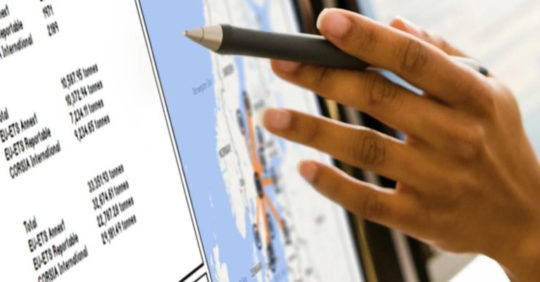
How Will CORSIA Affect You?
If you haven’t heard of CORSIA, it is a carbon emissions reduction plan that will be implemented for most international flights that will affect most aircraft operators. For a more in-depth description, read A Beginner’s Guide to CORSIA or see our basic overview here.
But even if you do know what it is, you may still be wondering, “Is this something I have to worry about?” or “We’re a small airline that flies a few regional flights a day. Do we have to worry about implementing this?”
Well, if you fly internationally… then most likely, yes.
In fact, according to ICAO, more than 85% of international aviation is covered by CORSIA from the outset. This means that even if you’re a small airline or business aviator, you should check your eligibility using our free CORSIA calculator and learn what you need to do by the September 30, 2018 deadline.
What are the eligibility requirements?
Aircraft that are eligible for CORSIA are those that meet a weight requirement and burn enough fuel.

Does your operation meet these criteria?
Specifically, those are aircraft that:
Have a maximum takeoff weight of 5,700 kg (12,500 lbs)
Emit 10,000 (metric) tonnes of CO2 annually (burn approximately 3,500 tonnes or 3858.09 US tonnes of fuel annually)
Still unsure? Check our free CORSIA calculator.
You are what you eat
10,000 metric tonnes of CO2 might seem too abstract at first, but we did the math, and you should know that 3,500 tonnes (3858.09 US tons) of fuel consumption per year generates 10,000 tonnes of CO2.
To put that number in perspective, let’s consider a few examples.
Example 1: A one hour route from Bristol to Amsterdam on an E190.
Flying this route eight times a day (four returns per day) is enough to qualify your entire operation for CORSIA.

Example 2: One flight per day from Osaka to Honolulu on an A330.
This single route is enough to qualify your operation for CORSIA as a large operator.

Who’s required to offset?
In addition to monitoring emissions, there will also be offsetting requirements for some international routes.
Some states, but not all, have chosen to participate in CORSIA offsetting from the beginning. This means that between 2021 and 2026, only routes between two Participating States must be offset. Routes between non-participating states or between a non-participating state and a Participating State do not need to be offset.
From the Second Phase that begins in 2027 and continues through 2035, all international routes will be eligible for offsetting with a few exceptions [see paragraph 9(e) on the linked PDF] .

Remember:
If your operation is eligible for CORSIA, you must apply MRV to every international flight beginning on January 1, 2019.
However, you only need to offset on routes from one Participating State to another between 2021 and 2026. Beginning in 2027, all international routes will require offsetting.
How does emissions calculating and offsetting work?
ICAO will multiply the emissions you report by the sectoral growth factor to determine the amount your operation needs to offset (This amount can be reduced if your operation uses sustainable alternative fuels.)
 Operators will then purchase one offsetting credit for each ton of CO2 emissions that ICAO tells them they must offset. These offsetting credits purchased from the carbon market will fund projects that reduce the amount of CO2 in the atmosphere, such as planting trees that absorb CO2 or developing wind and solar energy.
Operators will then purchase one offsetting credit for each ton of CO2 emissions that ICAO tells them they must offset. These offsetting credits purchased from the carbon market will fund projects that reduce the amount of CO2 in the atmosphere, such as planting trees that absorb CO2 or developing wind and solar energy.
It is important to note that between now and 2027, we can expect the amount of international air traffic eligible for offsetting to increase. As more states voluntarily become Participating States to help protect the environment, more routes will be eligible for offsetting.
Resources to get you started
Don’t worry, Jeppesen is here to help and support you along the way. Emissions Reporter is a great tool that can help your operation with monitoring, compiling, and reporting emissions for EU ETS and CORSIA. Additionally, you may want to check out 8 Tips to Help You Prepare for CORSIA to help you get started and a CORSIA overview on our website.
If you haven’t heard of CORSIA, it is a carbon emissions reduction plan that will be implemented for most international flights that will affect most aircraft operators. For a more in-depth description, read A Beginner’s Guide to CORSIA or see our basic overview here.
But even if you do know what it is, you may still be wondering, “Is this something I have to worry about?” or “We’re a small airline that flies a few regional flights a day. Do we have to worry about implementing this?”
Well, if you fly internationally… then most likely, yes.
In fact, according to ICAO, more than 85% of international aviation is covered by CORSIA from the outset. This means that even if you’re a small airline or business aviator, you should check your eligibility using our free CORSIA calculator and learn what you need to do by the September 30, 2018 deadline.
What are the eligibility requirements?
Aircraft that are eligible for CORSIA are those that meet a weight requirement and burn enough fuel.

Does your operation meet these criteria?
Specifically, those are aircraft that:
Have a maximum takeoff weight of 5,700 kg (12,500 lbs)
Emit 10,000 (metric) tonnes of CO2 annually (burn approximately 3,500 tonnes or 3858.09 US tonnes of fuel annually)
Still unsure? Check our free CORSIA calculator.
You are what you eat
10,000 metric tonnes of CO2 might seem too abstract at first, but we did the math, and you should know that 3,500 tonnes (3858.09 US tons) of fuel consumption per year generates 10,000 tonnes of CO2.
To put that number in perspective, let’s consider a few examples.
Example 1: A one hour route from Bristol to Amsterdam on an E190.
Flying this route eight times a day (four returns per day) is enough to qualify your entire operation for CORSIA.

Example 2: One flight per day from Osaka to Honolulu on an A330.
This single route is enough to qualify your operation for CORSIA as a large operator.

Who’s required to offset?
In addition to monitoring emissions, there will also be offsetting requirements for some international routes.
Some states, but not all, have chosen to participate in CORSIA offsetting from the beginning. This means that between 2021 and 2026, only routes between two Participating States must be offset. Routes between non-participating states or between a non-participating state and a Participating State do not need to be offset.
From the Second Phase that begins in 2027 and continues through 2035, all international routes will be eligible for offsetting with a few exceptions [see paragraph 9(e) on the linked PDF] .

Remember:
If your operation is eligible for CORSIA, you must apply MRV to every international flight beginning on January 1, 2019.
However, you only need to offset on routes from one Participating State to another between 2021 and 2026. Beginning in 2027, all international routes will require offsetting.
How does emissions calculating and offsetting work?
ICAO will multiply the emissions you report by the sectoral growth factor to determine the amount your operation needs to offset (This amount can be reduced if your operation uses sustainable alternative fuels.)
 Operators will then purchase one offsetting credit for each ton of CO2 emissions that ICAO tells them they must offset. These offsetting credits purchased from the carbon market will fund projects that reduce the amount of CO2 in the atmosphere, such as planting trees that absorb CO2 or developing wind and solar energy.
Operators will then purchase one offsetting credit for each ton of CO2 emissions that ICAO tells them they must offset. These offsetting credits purchased from the carbon market will fund projects that reduce the amount of CO2 in the atmosphere, such as planting trees that absorb CO2 or developing wind and solar energy.
It is important to note that between now and 2027, we can expect the amount of international air traffic eligible for offsetting to increase. As more states voluntarily become Participating States to help protect the environment, more routes will be eligible for offsetting.
Resources to get you started
Don’t worry, Jeppesen is here to help and support you along the way. Emissions Reporter is a great tool that can help your operation with monitoring, compiling, and reporting emissions for EU ETS and CORSIA. Additionally, you may want to check out 8 Tips to Help You Prepare for CORSIA to help you get started and a CORSIA overview on our website.
